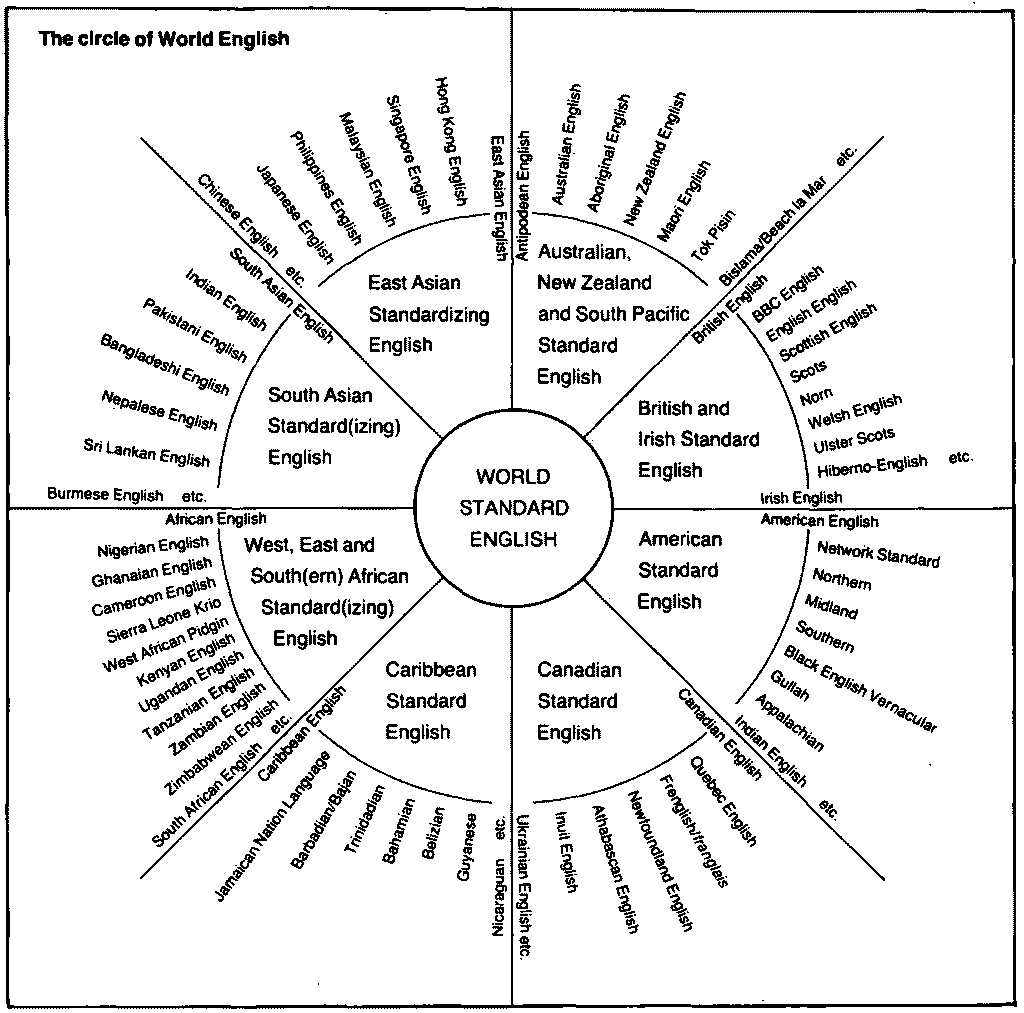英語変種の整理法として比較的早くに提起されたモデルの1つに "Hub-and-Spokes" モデルがある.様々な英語変種から構成される同心円の図を車輪のハブとスポークに見立てた視覚モデルだ.このモデルにもいくつかのバージョンがあるが,McArthur が1987年の論文 ("The English Languages?", 11) で提示したものを覗いてみたい.1991年の論文 ("Models of English", 19) に再掲されている図を再現する.

このモデルの要点について,McArthur ("The English Languages?", 11) は次のように解説している.
The purpose of the model is to highlight the broad three-part spectrum that ranges from the 'innumerable' popular Englishes through the various national and regional standards to the remarkably homogeneous but negotiable 'common core' of World Standard English.
McArthur 自身も述べているように,このモデルはあくまでたたき台として提案されたものであり,様々な問題や議論が生じることが予想される.実際,いくらでも批判的なコメントを加えることができる.個々の変種の分類はこの通りで広く受け入れられるのか,BBC English と Norn が同列に置かれているのはおかしいのではないか,また Australian English と Tok Pisin も然り.さらに本質的な問いとして,そもそも中央に据えられている "World Standard English" というものは現実に存在するのか.
この図が全体として World English を構成しているという見方については,McArthur ("The English Language", 10) は「逆説的な事実」であると評している.
Within such a model, we can talk about a more or less 'monolithic' core, a text-linked World Standard negotiated among a variety of more or less established national standards. Beyond the minority area of the interlinked standards, however, are the innumerable non-standard forms --- the majority now as in Roman times, with all sorts of reasons for being unintelligible to each other. There is nothing new in this, and it is a state of affairs that is unlikely to change in the short or even the medium term. In the distinctness of Scots from Black English Vernacular, Cockney from Krio, and Texian from Taglish, we have all the age-old criteria for talking about mutually unintelligible languages. Nonetheless, all such largely oral forms share in the totality of World English, and can be shown to share in it, however bafflingly different they may be. This is a paradox, but it is also a fact.
・ McArthur, Tom. "The English Languages?" English Today 11 (1987): 9--11.
・ McArthur, Tom. "Models of English." English Today 32 (1991): 12--21.